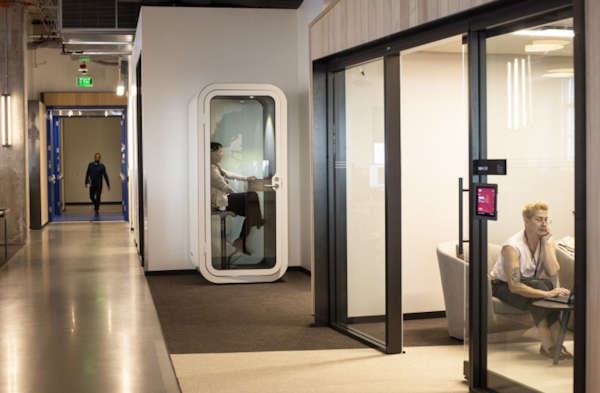Companies Wrestle With Hybrid Work Plans
- Awkward Meetings and Midweek Crowding

A mix of office and remote work brings new hurdles, from determining the
number of days employees spend in-person to how to conduct meetings; the Mondays
and Fridays problem
Big U.S. companies are discovering that “hybrid” work comes with plenty of
complications.
As employers firm up plans to bring white-collar workers back into offices while
still allowing them to do some work at home, many are encountering obstacles.
Companies are grappling with what new schedules employees should follow, where
people should sit in redesigned offices and how best to prevent employees at
home from feeling left out of impromptu office discussions or being passed over
for opportunities, say chief executives, board directors and others.
The insurer
Prudential Financial which expects most of its roughly 42,000 employees to
work in the office half the time starting after Labor Day, wants to make
certain not all staffers choose to stay home Mondays and Fridays and then
work in the office midweek. At the travel company
Expedia
Group executives are trying to figure out how to have in-person meetings
that don’t disadvantage those who aren’t in the room. Other employers,
including the software company
Twilio
predict that the new era of work could lead to shuffling between teams, with
staffers gravitating to bosses who embrace their preferred styles of working.
Hybrid work “is going to redefine expectations, rules, permissions.”
&uuid=(email)) Prudential
has been redesigning its office space floor by floor and repurposing most of
it for meeting rooms, collaboration and open space so people will be more likely
to interact. Mr. Falzon says he insisted on adding video capacity in more
small meeting spaces, not just conference rooms, so people working from home
won’t feel excluded.
Prudential
has been redesigning its office space floor by floor and repurposing most of
it for meeting rooms, collaboration and open space so people will be more likely
to interact. Mr. Falzon says he insisted on adding video capacity in more
small meeting spaces, not just conference rooms, so people working from home
won’t feel excluded.
Like many employers, the company
is reducing its physical footprint so
there won’t be available desks for people who want to go to the office more
frequently, with exceptions for some employees including traders. “We don’t
have a desk for you every day,” Mr. Falzon says. “We have a desk for you three
days a week.”
Hybrid models range by company. The technology company Adobe Inc. plans to allow
employees to work from home up to two to three days a week, with staffers able
to make reservations for office desks, says Gloria Chen, the company’s chief
people officer. Other companies are hesitant to put out a specific number on
days allowed at home. Factors including the length of a commute, type of job
and an employee’s seniority could determine how often an employee needs to visit
an office, executives say.
“We won’t prescribe” from a company level, says David Henshall, CEO at the
technology company Citrix Systems Inc. “Based on the type of role you have,
you’ll find that right balance.”
With flexibility can come challenges. If a team comes together in-person, but
not all can make it, that potentially creates a subpar experience for those not
in the room, says Expedia CEO Peter Kern. The travel company opened the first
phases of an expansive campus—complete
with Wi-Fi-equipped rocks —on the shores of Seattle’s Elliott Bay before the
pandemic, and plans to initially permit spaced group team meetings at its
headquarters.
Mr. Kern, though, says he has questions about whether those on Zoom will get the
same level of learning, encouragement and career growth as those in the room.
Then there are the scheduling issues.
Managers may need to “set up group meetings according to some crazy algorithm
of: Who’s available when? Who’s got a flexible day, when?” Mr. Kern says.
“There’s a lot of friction in all of that. It’s a lot easier to say, ‘Everybody
go to work.’ Now someone calls a meeting, and you’re all there.”
wsj.com